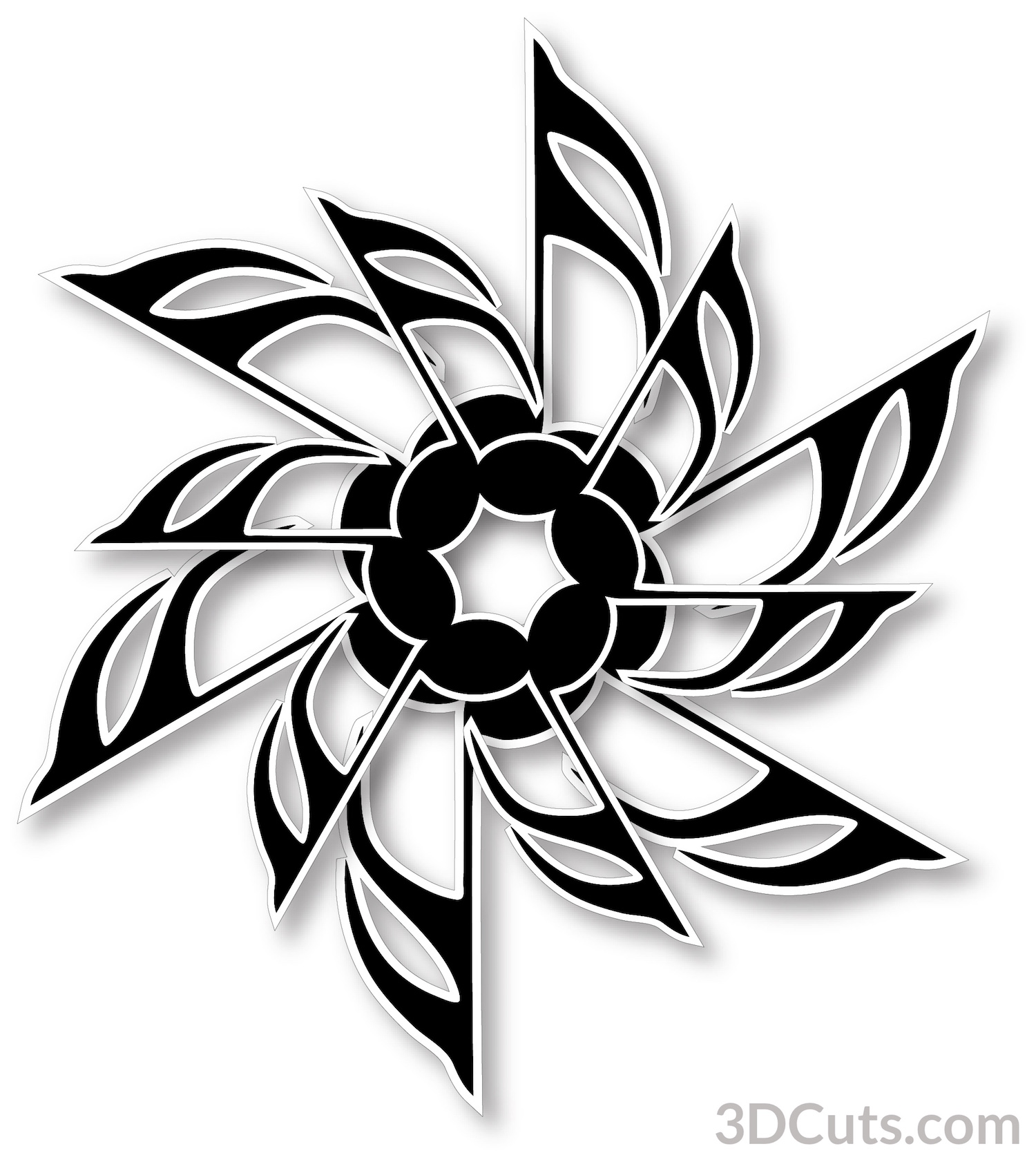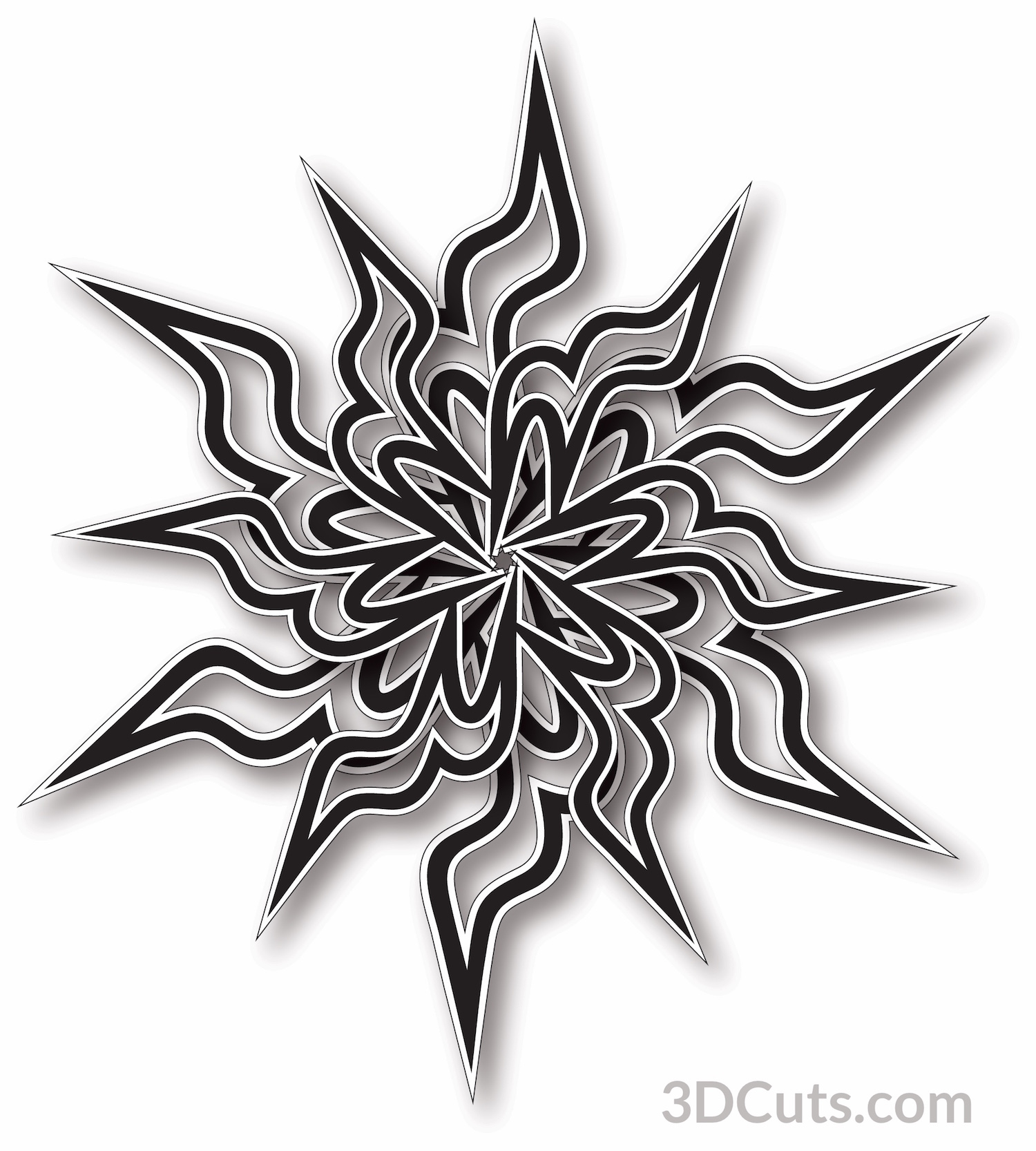Layered Musical Mandalas -Tutorial
Project Description:
The tutorial includes hints on how to cut and use the musical mandala patterns created by Marji Roy of 3DCuts.com. This series starts with dynamic musical symbols and uses those as the bases to create stunning layered mandala patterns. This can be created for multiple uses including wall art, greeting cards, as decorations on wrapped gifts, or even in vinyl on shirts.
A variety of these designs have been created. They can be used alone or in groups.
This assembly tutorial can be used for all the designs in this musical mandala series. I used the 1/4 Rest symbol as the basis for this particular tutorial. I have a growing number of different musical mandala designs all available here.
Musical Mandalas by Marji Roy at 3dcuts.com. SVG, PDF, DXF and PNG files available for cutting on your Silhouette, Cricut or other cutting machine.
Supplies Needed:
- Cutting File available from 3dcuts.com here.
- 8.5 x 11" card stock - I used the 65lb Cardstock from Recollections.
- Adhesive - Martha Stwearts ball-point Glue Pen, Tombow tape runner, Zig 2-way pen
- Pop Dots 1/4" x 1/8" thick
Note on Color Selection:
- I choose to use black and white because of the reference to a musical score but you certainly can be creative here.
Optional:
- Frames: I used the 9" x 9" Shadow Box Belmont Frame by Studio Decor sold at Michael's
Steps for completing the design :
1. Download the cutting files for your cutting machine from the 3dcuts.com store. Link here.
2. Load the files into your cutting software following the steps for your cutting machine.
3. Prepare the files:.
- For the Silhouette: The SVG files from this site will need to be turned into cutting files. Click here for detailed steps on how to use SVG files on your Silhouette. http://www.3dcuts.com/tutorial-upload-svg-silhouette
- For the Silhouette files from the Silhouette online design store: This download comes in one long file with cut lines already enabled. You will need to ungroup the file and then copy and paste the parts into separate page sized files to cut. All the text instructions are non cutting items.
- For Cricut Explore: Here is a guide for importing into Cricut Design Space. http://www.3dcuts.com/tutorial-adding-3dcuts-files-to-cricut
4. Cutting Hints:
- All of these files contain fine, detailed cuts and you need to understand how your cutting machine best handles detail work. I use a Silhouette Cameo and have found the Premium blade and a fairly new mat are required to get consistently clean cuts. I use the card stock setting with a blade of 3, a speed of 4 and a thickness of 21 but this is always blade and mat variable.
- Cut all the layers for your design.
5. To remove from the mat:
- When removing paper from a sticky mat it is always best to turn the mat over and remove the mat from the paper. This prevents your paper from curling. Be sure to place the mat protection sheet down before turning your mat over or it will pick up all the dust and scraps on your work surface.
- Use a small spatula and ease the finer parts away from the mat.
6. Glue the pairs together.
- Each musical mandala is made up of four layers, glued together in groups of two. Make sure you know which pairs go together and which sides are face-up. It is very easy to put the glue on the wrong side.
- I like using the Martha Stewart Ball-Point Glue Pen for this project. It gave me placement control as I only applied the glue to one section at a time.
- For some larger spaces I used the Tombow tape runner or the 2-way Zig pen.
- I applied tin lines of glue to the center area on the BACK side of one of the front pieces.
- The goals was to only cover as much as I could before the glue started drying.
- I then carefully positioned this on top of the matching back piece.
- Placement is important and I carefully moved it so margins were the same in all quadrants.
- I then placed a guard sheet over the design and carefully folded back one of the spokes of the design.
- Using the glue pen I placed a line of adhesive along the center of the bottom design.
- I pressed that spoke in place being careful to center it.
- Repeat this with all of the spokes.
- Repeat these steps with the second pair of designs paying attention to fronts and backs.
- What are your plans for this design? Here procedures will vary depending on your plan.
- If making a shadow box as shown then cut a background sheet of card stock. If using the 9 x 9 shadow boxes then cut it about 8 15/16" square.
- Mark the center. I located the center and made a pin hole there to help me line up the design.
7. Add Foam Dimensional Squares
- I like these displayed as floating in the shadow box so I added dimensional dots to the back. I used the 1/4" square by 1/8" foam dots.
- I placed them on each point of the design plus 3-4 near the center depending on the pattern.
- Try to place them so they will not be visible.
- Peel the backing off the foam dots and carefully position the design in the center of the background. Use the pinhole as a guide.
- Once you are certain you like the placement, press firmly in place.
- On this particular design the front layer is quite a bit thinner so I cut the foam squares in half.
- For the front design you need to consider dot placement.
- For any location that clear the back design, you will need to use 2 foam dots, and for areas that are on top of the back design, use only one.
- Note: I adhered 2 together to make a stack 1/4" tall for the front design. I wanted it to be floating above the first design.
- Attach the top layer.
- Center it carefully, makes sure the foam dots fit into spaces, and press in place.
- Finish framing. I used the 9 x 9" Benton shadow Box frame from Michael's for this design.
- Now make some of the other designs.
Create the entire collection for a wall display.
Happy crafting everyone!
























